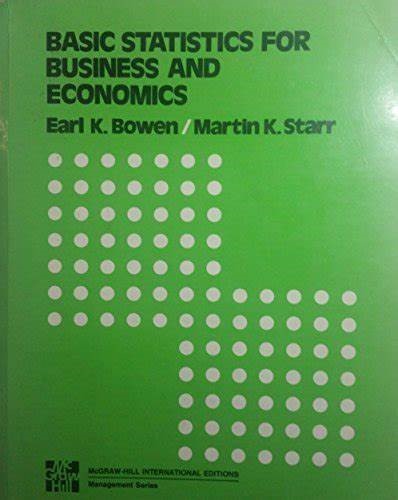BASIC BUSINESS STATISTICS FOR MANAGEMENT AND ECONOMICS
This book is the result of my teaching experience in the subject and working experience in various software’s related to STATISTICS to Sikkim Manipal University, Udupi students for about 8 years. It is designed to meet the requirements of students at Bachelor’s, Masters and Ph D levels in Engineering and Management (M E, MCA MBA and Ph D in Project Management, Engg, Computer Applications and Business Administration).
The main highlight of the book is the total solved problem approach for numerical question problems framed by the author with many theoretical concepts. This book has a large number of problems solved in all 24 chapters & many questions with answers and explanations.
I thank various International software makers in the field of Statistics which made me enable to work on tricky NUMERICAL PROBLEMS involving data ad almost all theoretical concepts r covered in this book.
There are many problems and all theoretical concepts related to Statistics framed by myself and can be best suitable for Bachelors, Masters & Ph D students during their RESEARCH WORK in the three fields mentioned below:
ENGINEERING-ALL FIELDS. (BACHELOR LEVEL, MASTERS LEVEL AND DOCTORS LEVEL)
COMPUTER APPLICATIONS. (BACHELOR LEVEL, MASTERS LEVEL AND DOCTORS LEVEL)
BUSINESS ADMINISTRATION. (BACHELORLEVEL, MASTERS LEVEL AND DOCTORS LEVEL)
SRINIVAS R RAO
EDUNXT CERTIFIED LEVEL III FACULTY FOR MBA
TRACKS INDIA INFOTECH LTD, UDUPI
SIKKIM MANIPAL UNIVERSITY, MANIPAL
CHAPTER 1 WHAT IS STATISTICS?
MULTIPLE CHOICE QUESTIONS
In the following multiple-choice questions, please circle the correct answer.
1. You asked five of your classmates about their height. On the basis of this information, you stated that the average height of all students in your university or college is 65 inches. This is an example of:
a. descriptive statistics
b. statistical inference
c. parameter
d. population
ANSWER: b
2. A company has developed a new computer sound card, but the average lifetime is unknown. In order to estimate this average, 200 sound cards are randomly selected from a large production line and tested and the average lifetime is found to be 5 years. The 200 sound cards represent the:
a. parameter
b. statistic
c. sample
d. population
ANSWER: c
3. A summary measure that is computed from a sample to describe a characteristic of the population is called a
a. parameter
b. statistic
c. population
d. sample
ANSWER: b
4. A summary measure that is computed from a population is called a
a. parameter
b. statistic
c. population
d. sample
ANSWER: a
5. When data are collected in a statistical study for only a portion or subset of all elements of interest, we are using a:
a. sample
b. parameter
c. population
d. statistic
ANSWER: a
6. Which of the following is not the goal of descriptive statistics?
a. Summarizing data
b. Displaying aspects of the collected data
c. Reporting numerical findings
d. Estimating characteristics of the population
ANSWER: d
7. Which of the following statements is not true?
a. One form of descriptive statistics uses graphical techniques
b. One form of descriptive statistics uses numerical techniques
c. In the language of statistics, population refers to a group of people
d. Statistical inference is used to draw conclusions or inferences about characteristics of populations based on sample data
ANSWER: c
8. Descriptive statistics deals with methods of:
a. organizing data
b. summarizing data
c. presenting data in a convenient and informative way
d. All of the above
ANSWER: d
9. A politician who is running for the office of governor of a state with 4 million registered voters commissions a survey. In the survey, 54% of the 5,000 registered voters interviewed say they plan to vote for her. The population of interest is the:
a. 4 million registered voters in the state
b. 5,000 registered voters interviewed
c. 2,700 voters interviewed who plan to vote for her.
d. 2,300 voters interviewed who plan not to vote for her
ANSWER: a
10. A company has developed a new battery, but the average lifetime is unknown. In order to estimate this average, a sample of 500 batteries is tested and the average lifetime of this sample is found to be 225 hours. The 225 hours is the value of a:
a. parameter
b. statistic
c. sample
d. population
ANSWER: b
11. The process of using sample statistics to draw conclusions about true population parameters is called
a. inferential statistics
b. the scientific method
c. sampling method
d. descriptive statistics
ANSWER: a
12. Which of the following is most likely a population as opposed to a sample?
a. Respondents to a magazine survey
b. The first 10 students completing a final exam
c. Every fifth student to arrive at the book store on your campus
d. Registered voters in the State of Michigan
ANSWER: d
13. Researchers suspect that the average number of credits earned per semester by college students is rising. A researcher at Michigan State University (MSU) wished to estimate the number of credits earned by students during the fall semester of 2003 at MSU. To do so, he randomly selects 500 student transcripts and records the number of credits each student earned in the fall term 2003. He found that the average number of semester credits completed was 14.85 credits per student. The population of interest to the researcher is
a. all MSU students
b. all college students in Michigan
c. all MSU students enrolled in the fall semester of 2003
d. all college students in Michigan enrolled in the fall semester of 2003
ANSWER: c
14. The collection and summarization of the graduate degrees and research areas of interest of the faculty in the University of Michigan of a particular academic institution is an example of
a. inferential statistics
b. descriptive statistics
c. a parameter
d. a statistic
ANSWER: b
15. Those methods involving the collection, presentation, and characterization of a set of data in order to properly describe the various features of that set of data are called
a. inferential statistics
b. the scientific method
c. sampling method
d. descriptive statistics
ANSWER: d
16. Which of the following is most likely a parameter as opposed to a statistic?
a. The average score of the first ten students completing an assignment
b. The proportion of females registered to vote in Kent County, Michigan
c. The average height of 100 students randomly selected from a community college
d. The proportion of cars stopped yesterday on US 131 that were cited for speeding
ANSWER: b
17. A study is under way in a national forest to determine the adult height of pine trees. Specifically, the study is attempting to determine what factors aid a tree in reaching heights greater than 50 feet tall. It is estimated that the forest contains 32,000 pine trees. The study involves collecting heights from 500 randomly selected adult pine trees and analyzing the results. The sample in the study is
a. the 500 randomly selected adult pine trees
b. the 32,000 adult pine trees in the forest
c. all the adult pine trees taller than 50 feet
d. all pine trees, of any age in the forest
ANSWER: a
18. The estimation of the population average student expenditure on education based on the sample average expenditure of 1,000 students is an example of
a. inferential statistics
b. descriptive statistics
c. a parameter
d. a statistic
ANSWER: a
TRUE / FALSE QUESTIONS
19. When the purpose of the statistical inference is to draw a conclusion about a population, the significance level, as a measure of reliability, measures how frequently the conclusion
will be correct in the long run.
ANSWER: F
20. A summary measure that is computed from a sample to describe a characteristic of the population is called a statistic.
ANSWER: T
21. The confidence level is the proportion of times that an estimating procedure will be wrong.
ANSWER: F
22. Conclusions and estimates about a population based on sample data are not always going to be correct. For this reason, measures of reliability, such as the significance level and the confidence level, should be built into the statistical inference.
ANSWER: T
READ MUCH MORE INSIDE…
1073 Pages

Click on the Purchase Button Below for Instant Access!
 If for any reason you decided within 30 days that “BASIC BUSINESS STATISTICS FOR MANAGEMENT AND ECONOMICS” isn’t for you, simply notify us by email and we’ll gladly refund your money – no questions asked. That’s our Ironclad Guarantee! The risk is entirely ours! You absolutely have nothing to lose!
If for any reason you decided within 30 days that “BASIC BUSINESS STATISTICS FOR MANAGEMENT AND ECONOMICS” isn’t for you, simply notify us by email and we’ll gladly refund your money – no questions asked. That’s our Ironclad Guarantee! The risk is entirely ours! You absolutely have nothing to lose!
Warm Regards, Coyalita
Copyright © 2021 – 2024 U.S.A. Ads Coyalitalinville.com All Rights Reserved Privacy Policy – Earnings Disclaimer – Terms of Use – Contact Us
